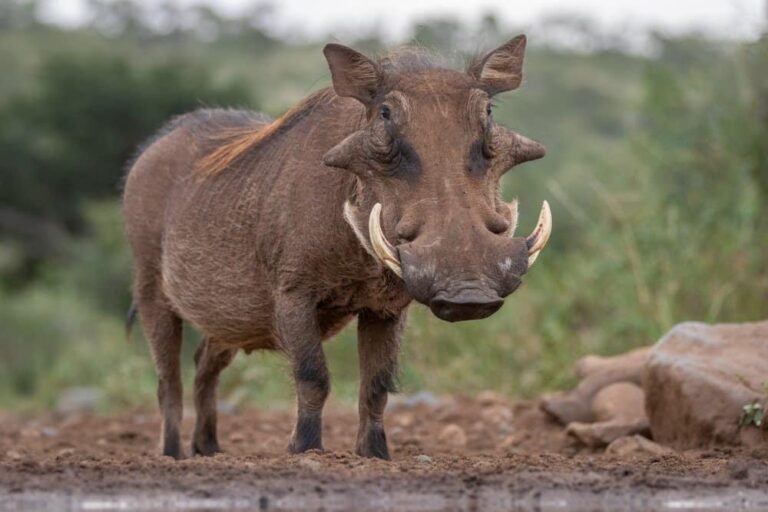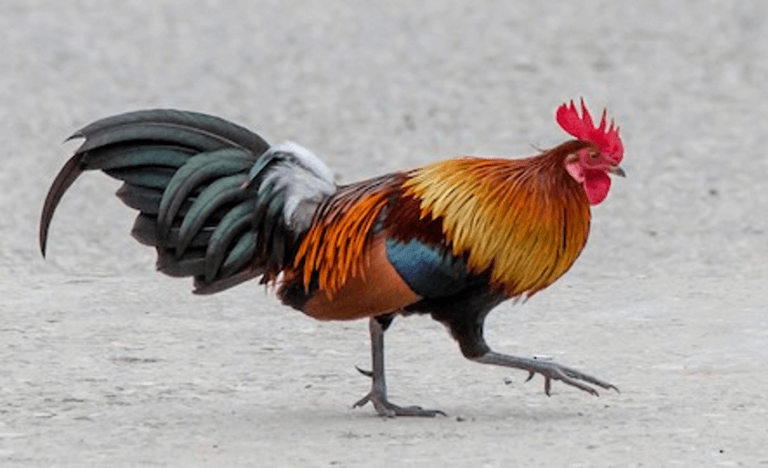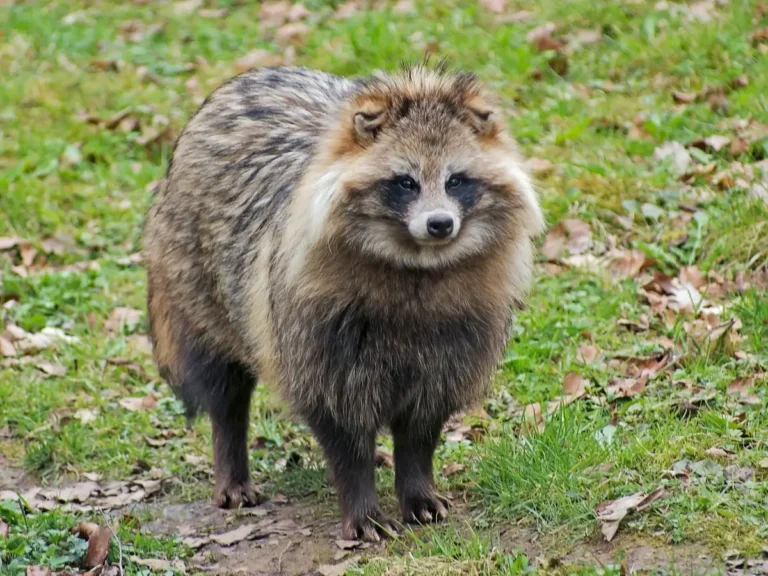Red Panda: A Complete Guide to Its Life and Conservation
The red panda is a unique and fascinating mammal known for its striking appearance and elusive nature. Often overshadowed by its distant relative, the giant panda, this small arboreal animal is an essential part of the biodiversity of its native habitat.
This in-depth article will cover the red panda’s scientific classification, physical characteristics, habitat, behavior, diet, reproduction, predators, conservation status, interesting facts, evolutionary history, and its relationship with humans.
Contents
Scientific Classification
- Common Name: Red Panda
- Scientific Name: Ailurus fulgens
- Family: Ailuridae
- Order: Carnivora
- Class: Mammalia
- Phylum: Chordata
- Kingdom: Animalia
The red panda is the only living member of the Ailuridae family, highlighting its unique evolutionary path distinct from that of other carnivores.
Physical Characteristics
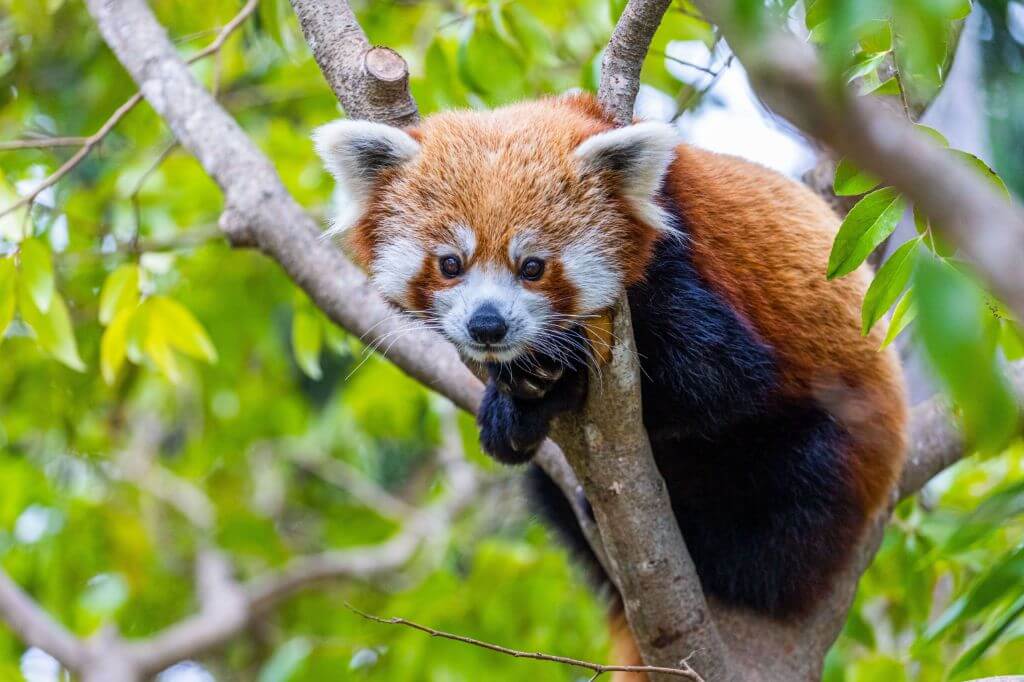
- Size: Red pandas measure about 20 to 26 inches in body length, with their tail adding an extra 12 to 20 inches. They weigh between 8 to 14 pounds.
- Fur: They have dense, reddish-brown fur with white markings on their face and a bushy ringed tail, which helps with balance and camouflage.
- Facial Features: Their face resembles a raccoon, with dark tear tracks extending from their eyes to the corners of their mouth, which are thought to reduce glare and prevent sun damage.
- Limbs: Red pandas have sharp, semi-retractable claws that assist in climbing trees and gripping bamboo. They also possess a “false thumb” – an extension of the wrist bone – that helps them grasp objects.
Habitat
- Geographical Range: Red pandas are native to the eastern Himalayas and southwestern China. They are found in the temperate forests of Nepal, India, Bhutan, Myanmar, and China.
- Preferred Environment: They thrive in mixed forests with a dense understory of bamboo at elevations ranging from 4,900 to 13,000 feet. These high-altitude forests’ cool, temperate climate suits their thick fur and solitary lifestyle.
Behavior
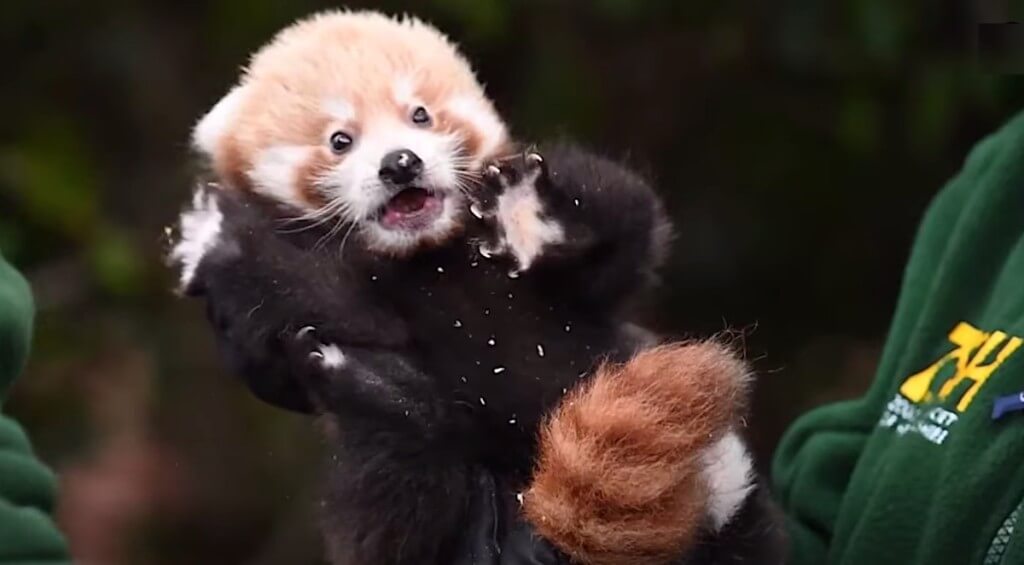
- Daily Activity: Red pandas are crepuscular, meaning they are most active during the dawn and dusk. They spend most of their time in trees, using their agile bodies to navigate the forest canopy.
- Social Structure: Generally solitary, red pandas come together only during mating season. They communicate through vocalizations, scent markings, and body language.
- Sleeping Habits: They often sleep on tree branches or in hollows during the day, curling up with their tail wrapped around themselves for warmth.
Diet
- Primary Diet: Despite being classified as carnivores, red pandas are herbivorous, with bamboo shoots and leaves making up over 95% of their diet.
- Supplementary Food: They eat fruits, acorns, roots, and occasionally small insects or birds. Due to their low-calorie diet, they must consume large amounts of food daily.
- Feeding Behavior: Red pandas have a specialized digestive system that helps them process fibrous bamboo, though they extract only a small percentage of its nutrients.
Reproduction
- Mating Season: Mating typically occurs between January and March, with females entering estrus for just one or two days each year.
- Gestation and Birth: The gestation period lasts about 134 days, after which the female gives birth to 1-4 cubs in a nest made of leaves and branches.
- Parental Care: The mother is the primary caregiver, and the cubs remain dependent on her for the first few months. They are weaned at around five months and reach full maturity at 18 months.
Predators
- Natural Predators: Snow leopards, martens, and birds of prey are known to hunt red pandas. They are also vulnerable to attacks from domestic dogs.
- Defensive Behavior: Red pandas use their sharp claws and teeth for defense and often climb trees to escape threats.
Conservation Status
- IUCN Status: Red pandas are classified as Endangered by the International Union for Conservation of Nature (IUCN), with fewer than 10,000 individuals estimated to remain in the wild.
- Threats: Major threats include habitat loss due to deforestation, poaching for their fur, and the pet trade. Climate change is also impacting their habitat by altering the bamboo growth they rely on.
- Conservation Efforts: Conservation organizations are working to protect red panda habitats, enforce anti-poaching laws, and promote captive breeding programs to bolster wild populations.
Interesting Facts
- Name Origin: The name “panda” is derived from the Nepali word “pony,” meaning bamboo or plant-eating animal, predating the naming of the giant panda.
- Heat Regulation: Red pandas lick their paws and rub their fur to stay cool in warmer temperatures.
- Adaptations: Their thick fur keeps them warm and provides excellent camouflage among the reddish-brown trees of their habitat.
Evolutionary History
Red pandas are considered “living fossils,” having evolved millions of years ago, with ancestors dating back to the Miocene epoch (about 25 million years ago). Genetic studies suggest they share a common ancestor with bears and raccoons, although their unique lineage places them in a separate family.
Relationship with Humans
Red pandas have captured the human imagination due to their adorable appearance, leading to their portrayal in popular culture and increasing presence in zoos worldwide. However, their interaction with humans has not always been positive, as habitat encroachment and illegal wildlife trade threaten their survival.
Conclusion
The red panda is a captivating and unique species with distinct physical and behavioral characteristics that set it apart in the animal kingdom. Despite being lesser-known than its namesake, the giant panda, it plays a crucial role in its ecosystem. Conservation efforts are essential to protect this remarkable animal from the threats it faces. By raising awareness and supporting habitat preservation initiatives, we can help ensure the survival of the red panda for future generations.
- Golden Retriever Pros and Cons: What Every Pet Parent Should Know - 15 September 2025
- Cane Corso Dog Breed: Health, Care, and Lifespan - 14 September 2025
- Catahoula Leopard Dogs: Description, Temperament, Lifespan, & Facts - 21 July 2025




